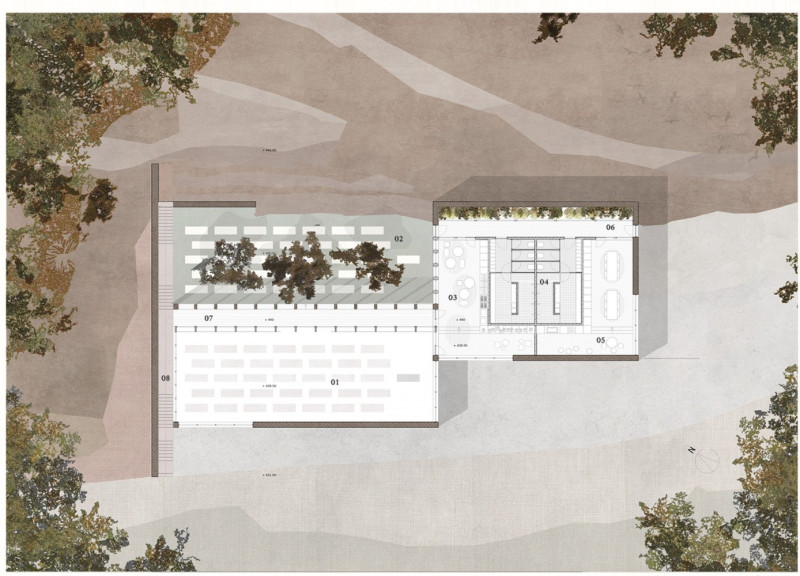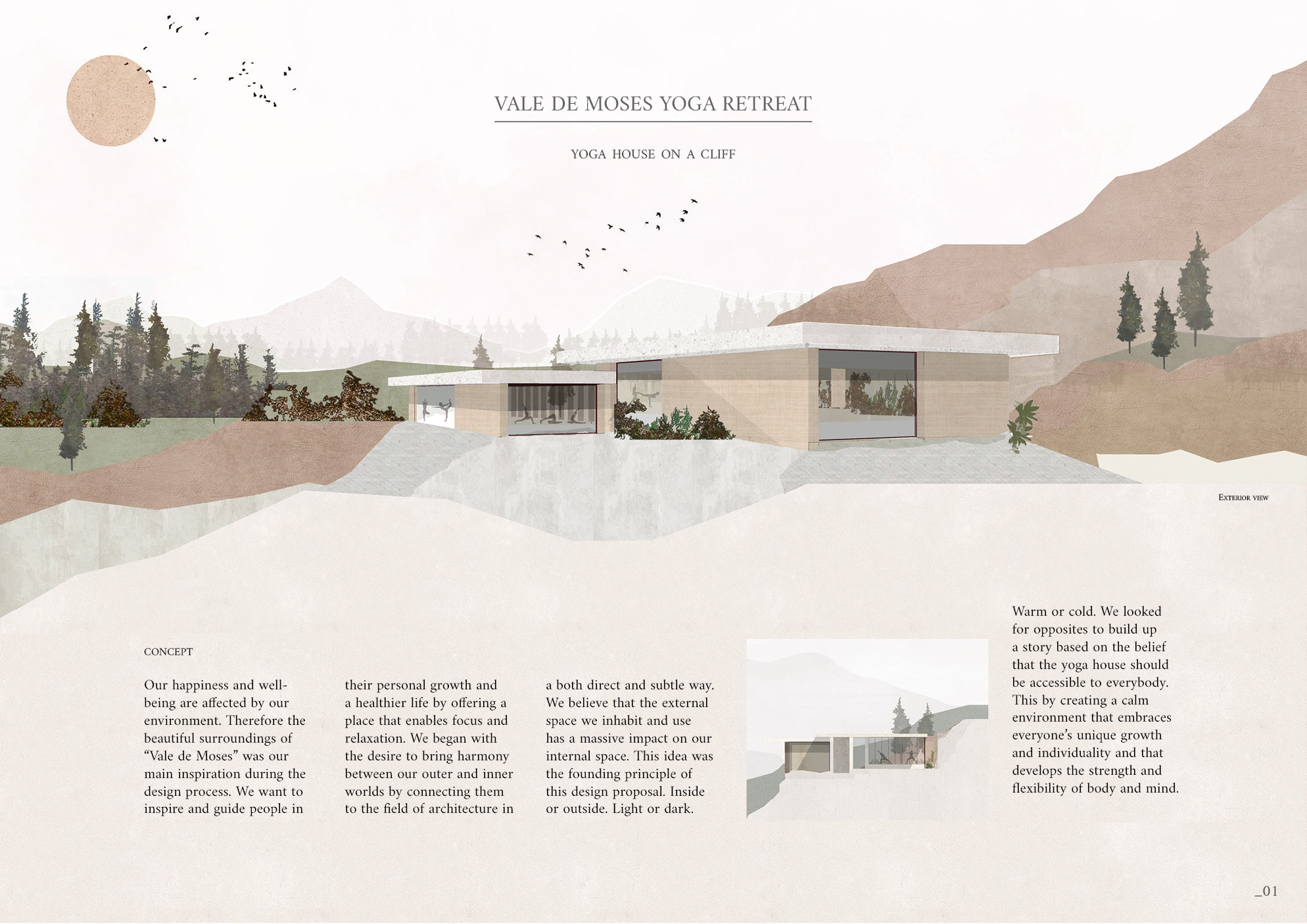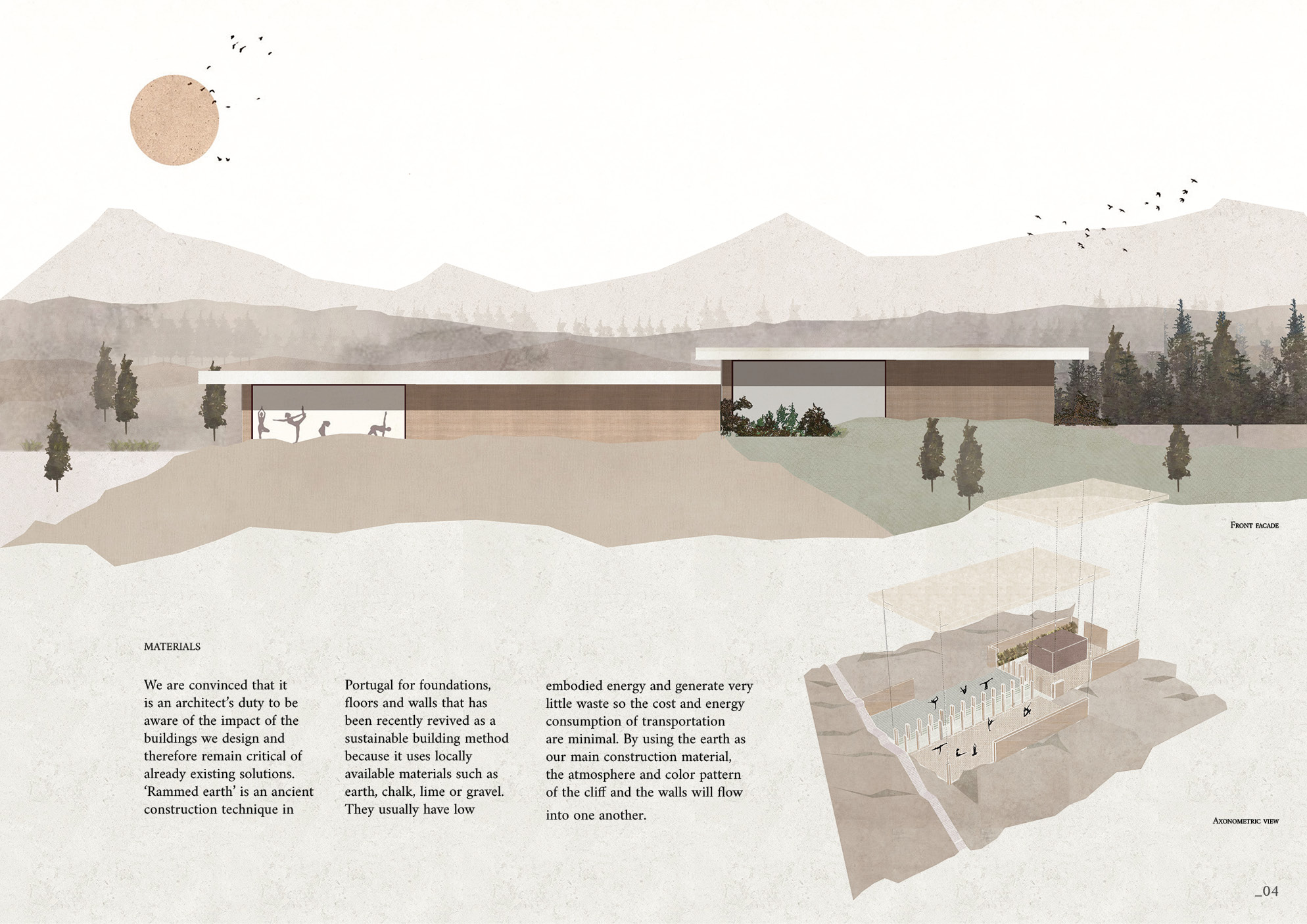5 key facts about this project
The Vale de Moses Yoga Retreat, located in the scenic Vale de Moses, serves as a yoga house situated on a cliff. This location promotes a natural environment that supports personal growth and relaxation. The design concept emphasizes the connection between the physical space and individual well-being, encouraging users to immerse themselves in nature while practicing yoga.
Site Integration
The yoga house is carefully designed to fit within the contours of the surrounding mountain. It respects the site’s natural topography, enhancing the experience for those who visit. The building's levels respond to the landscape, using steps to guide movement throughout the space, which clarifies pathways. These thoughtful design elements create areas for quiet reflection, contributing to a peaceful atmosphere.
Natural Light and Views
Large windows throughout the structure bring in natural light and frame views of the valley. This design choice creates a connection between the inside and outside, allowing the occupants to feel linked to the landscape. The emphasis on light and openness is especially important in the practice areas and communal spaces, where users can appreciate the tranquility of their surroundings. This relationship between nature and the interior enhances overall well-being.
Central Garden Feature
At the center of the design lies a walled inner garden, echoing the features of a monastery cloister. This central garden acts as a focal point, drawing circulation paths towards it. It serves as a calm retreat for quiet contemplation and mindfulness, enriching the environment of the yoga house. This unique aspect encourages users to engage more deeply with their surroundings, promoting a sense of peace.
Sustainable Materiality
Rammed earth is employed as the primary building method, honoring local construction traditions while promoting sustainability. This technique makes use of earth, chalk, lime, and gravel sourced from the area, reducing the ecological footprint of the structure. The use of rammed earth not only improves energy efficiency but also creates a comfortable environment inside. These material choices reflect a commitment to environmental responsibility and strengthen the connection between the building and nature.
The design features a blend of open spaces filled with light and intentional pathways that allow visitors to experience both physical relaxation and inner calm.






















































